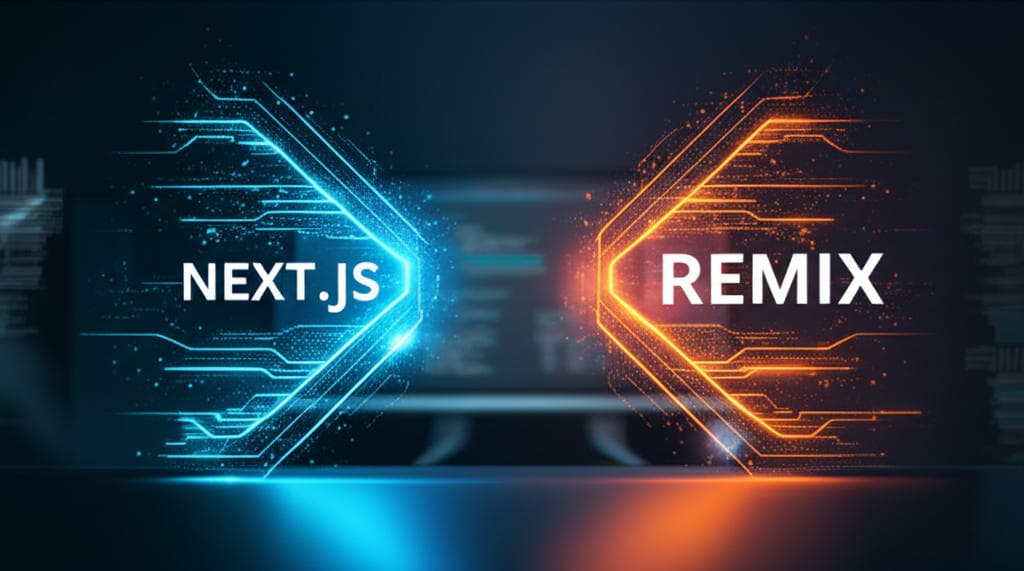Top Front-End Frameworks for 2025: The Future of Modern Web Development
October 28, 2025
·113 views

Top Front-End Frameworks for 2025: The Future of Modern Web Development
Front-end development is evolving faster than ever, and 2025 is no exception.
As user expectations grow and performance becomes critical, developers are shifting toward frameworks that offer speed, scalability, and developer experience.
Let’s explore the top front-end frameworks dominating 2025 — and how they’re shaping the next generation of the web.
⚛️ 1. React.js — Still the King of Front-End
React continues to be the most widely used front-end library in 2025. With React 19 RC, developers now get Actions, the use hook, and improved concurrent rendering.
🚀 Why React Still Leads:
- Huge ecosystem and community support
- Integration with tools like Next.js and Remix
- Improved developer ergonomics with React Compiler
- Long-term stability for large projects
Best Use Cases:
Dashboards, SaaS apps, and enterprise-scale UIs.
🌐 2. Next.js — The Full-Stack Front-End Powerhouse
Next.js continues to evolve as a complete React-based full-stack framework.
With Next.js 15, Vercel introduced Edge Rendering, React Server Components, and Turbopack as default — making development lightning-fast.
🔑 Key Features in 2025:
- Built-in support for TypeScript 5.6
- Enhanced App Router and data fetching APIs
- Edge-first rendering for global speed
- Seamless Vercel deployment integration
Best Use Cases:
SaaS platforms, marketing sites, and dynamic dashboards.
⚡ 3. Qwik — The Future of Resumable Frameworks
Qwik by Builder.io is redefining performance by introducing resumability instead of hydration.
It loads instantly, no matter how big your app is — making it a strong contender for high-performance web apps.
🧩 Why Developers Love Qwik:
- Zero JS execution on page load
- Fine-grained lazy loading
- Excellent Lighthouse scores out-of-the-box
Best Use Cases:
E-commerce, landing pages, and SEO-critical websites.
🔮 4. Solid.js — Reactivity Meets Simplicity
Solid.js focuses on true reactivity with a small footprint.
In 2025, Solid’s ecosystem is booming, with new routing and server rendering tools.
🧠 Highlights:
- No virtual DOM — faster rendering
- Small bundle size (~5KB gzipped)
- Familiar JSX syntax
Best Use Cases:
SPAs, widgets, and embedded UI components.
🧱 5. Svelte and SvelteKit — The Compiler-Based Revolution
Svelte has matured significantly with Svelte 5 and SvelteKit 2.0.
Instead of running in the browser, Svelte compiles your code at build time, producing super-fast vanilla JS output.
💡 What’s New in 2025:
- Improved transitions and animations API
- TypeScript-first support
- Faster build times with Vite integration
Best Use Cases:
Static sites, creative portfolios, and high-performance apps.
🧭 6. Vue.js — The Evergreen Contender
Vue 4 is now in early adoption, focusing on composition API improvements and fine-grained reactivity inspired by Solid.js.
It remains the top choice for teams seeking a balance between simplicity and structure.
⚙️ Key Strengths:
- Seamless learning curve
- Deep tooling ecosystem (Nuxt, Pinia, Vite)
- Active community in Asia and Europe
Best Use Cases:
Admin dashboards, medium-sized business apps, and prototypes.
🔥 Bonus: Astro — The Framework for Content-Driven Sites
Astro 4 introduces Hybrid Islands architecture, blending static content and interactive components from React, Svelte, and Vue.
It’s ideal for blogs, docs, and content-focused websites.
🏁 Conclusion
The front-end landscape in 2025 is defined by speed, flexibility, and developer experience.
Whether you’re building a large SaaS platform or a lightweight marketing site, there’s a framework that fits your needs:
| Framework | Strength | Ideal For |
|---|---|---|
| React | Ecosystem & stability | Enterprise UIs |
| Next.js | Full-stack power | SaaS / Dynamic apps |
| Qwik | Resumability | High-performance sites |
| Solid.js | Reactivity | Small SPAs |
| Svelte | Compile-time magic | Portfolios & creative apps |
| Vue | Simplicity | Medium projects |
| Astro | Content-first | Blogs & Docs |
✨ The best framework isn’t the newest — it’s the one that aligns with your project goals and your team’s mindset.
Tags: frontend, react, nextjs, qwik, solidjs, svelte, vue, astro, webdevelopment, javascript, frameworks


